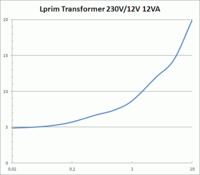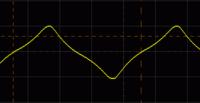gabi_pds
Newbie level 6

Hello,
I'm measuring the inductance in a 4.5VA transformer (230V/18V) with an LCR meter (PM 6304) in 50 Hz (operation frequency).When I measure it in the primary side (with the secondary side opened), I get 14,980 H and when I measure the secondary inductance (with the primary opened), I get 223.45 mH. These values obtained are not what I expected, because I expected that the ratio between the primary and secondary inductances would be (230/18)². Why doesn't this happen?
I'm measuring the inductance in a 4.5VA transformer (230V/18V) with an LCR meter (PM 6304) in 50 Hz (operation frequency).When I measure it in the primary side (with the secondary side opened), I get 14,980 H and when I measure the secondary inductance (with the primary opened), I get 223.45 mH. These values obtained are not what I expected, because I expected that the ratio between the primary and secondary inductances would be (230/18)². Why doesn't this happen?





